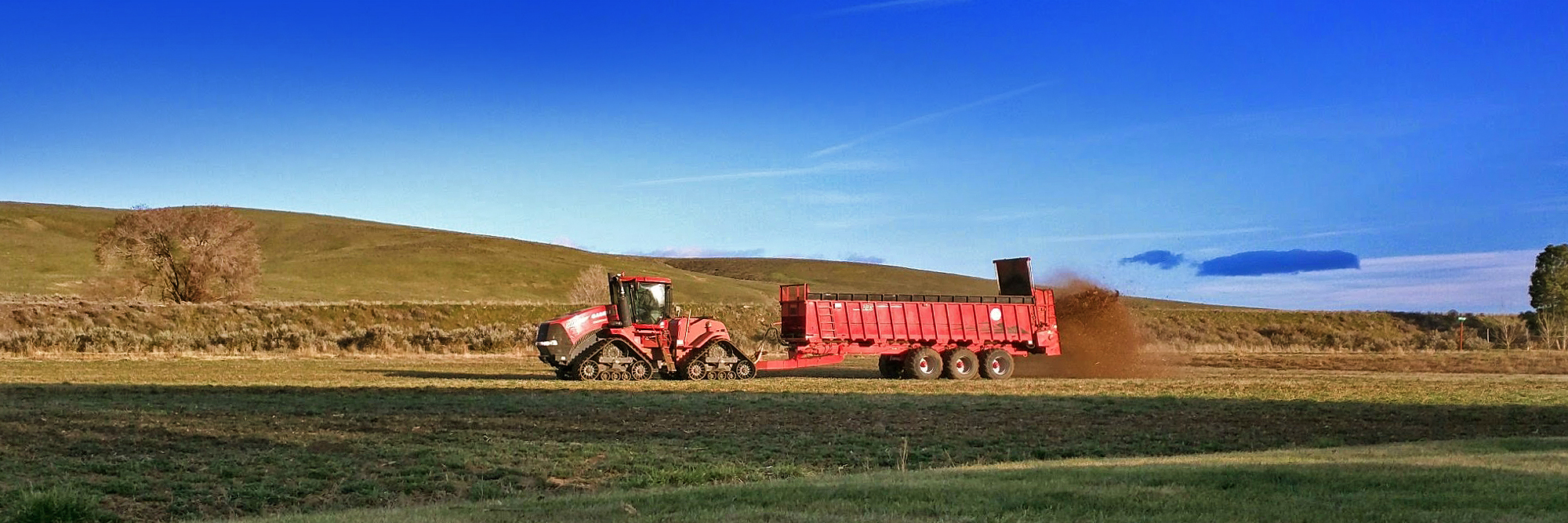Cloudview employs sustainable farming practices when growing your food. One element of sustainable farming is improving soil fertility, or raising the levels of humus in the soil.
Humus is the stuff in a handful of soil that gives it its blackish cast and characteristic smell. It’s hard to say exactly what humus is because it is so many things. Humus is what’s left of organic matter after it has been broken down by the billions of big and small organisms that inhabit a spoonful of earth—the bacteria, phages, fungi, and earthworms responsible for decomposition….But humus is not a final product of decomposition so much as a stage, since a whole other group of organisms slowly breaks humus down into the chemical elements plants need to grow…It also serves as the glue that binds the minute mineral particles in soil together into airy crumbs and holds water in suspension so that rainfall remains available to plant roots instead of instantly seeping away.
 Today the compost spreader visited founder Jim Baird’s fields north of the farm. It spread a compost made up of wood chips and leaves. This is in addition to the goats that grazed the fields this winter and left their own fertilizer. As the compost breaks down, the organic content of the soil will raise, making the soil healthier, and better able to retain water and grow crops. Healthier soil in turn raises the nutrition levels of crops. This is why the food we grow at Cloudview tastes so good, it’s extra-nutritious because it’s grown in healthy soil.
Today the compost spreader visited founder Jim Baird’s fields north of the farm. It spread a compost made up of wood chips and leaves. This is in addition to the goats that grazed the fields this winter and left their own fertilizer. As the compost breaks down, the organic content of the soil will raise, making the soil healthier, and better able to retain water and grow crops. Healthier soil in turn raises the nutrition levels of crops. This is why the food we grow at Cloudview tastes so good, it’s extra-nutritious because it’s grown in healthy soil.
The compost spreader adding organic matter to a hay field
Goats grazing and fertilizing the field in January.
Want to learn more about healthy soil? We recommend: The Soil Will Save Us: How Scientists, Farmers, and Foodies Are Healing the Soil to Save the Planet, The Omnivore’s Dilemma: A Natural History of Four Meals
, and Gaining Ground: A Story of Farmers’ Markets, Local Food, and Saving the Family Farm
.


















